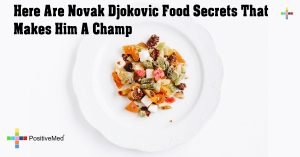
6 Disturbing Ways Restaurants Trick Your Taste Buds
Going out to eat is a treat sure to tantalize any taste buds– but is it for the right reasons? As it turns out, you might not have actually loved your food as much as you thought; restaurants have some clever, if a little creepy, ways of convincing your maybe not-so-great food was delectable and high-end, like…

1. Amping Up the Name
Using descriptive words in the name of a dish, like “succulent”, makes diners consider them more delicious. Cornell researchers found that foods with more beautiful sounding names were consistently more popular and considered more appealing across the board.
2. Upping the Price
People are fickle creatures, and we’re easily misled into attributing things inherent value based on the price we’re told they should be worth. A study conducted by Cornell found that, when offered a $4 or $8 all you can eat buffet, customers who chose the $8 buffet reported they were happier with their food than those who chose the $4 buffet– the exact same food.
3. Playing Off Your Nose
The major component involved in taste is actually smell; this is why you can confuse your taste buds into tasting something else by smelling something aromatic while you’re eating. Restaurants take advantage of this by diffusing scents throughout the air, or, according to the Wall Street Journal, switching bakers from night to day shift so the space smells like fresh bread.
4. Not Skimping on the Seasoning
Homemade food never seems to taste as good as an equivalent restaurant dish, and this may be because restaurant chefs aren’t afraid to dump in tons of salt and MSG. Both are cheap, easy ways to make food taste better.
5. “Enhancing” Food
Companies like Dow Pharma & Food Solutions exist solely to play with “solutions” to foods, like improving the texture, or replacing fats while simulating the mouth-feel of fatty foods.
6. Using Artificial Ingredients
Colors and flavorings are a staple in the culinary industry, but they can be slightly nefarious in their use to simulate ingredients that aren’t actually there. Pumpkin spice beverages are a huge culprit here– nearly none of them contain real pumpkin.
Not all of these things are terrible for you, but it’s a little disturbing to think we may be eating artificially enhanced Frankenfood. When deciding on your favorite restaurant, look for ones that use fresh ingredients that are beautiful in their own right, without sneaky smells or falsely inflated prices.





